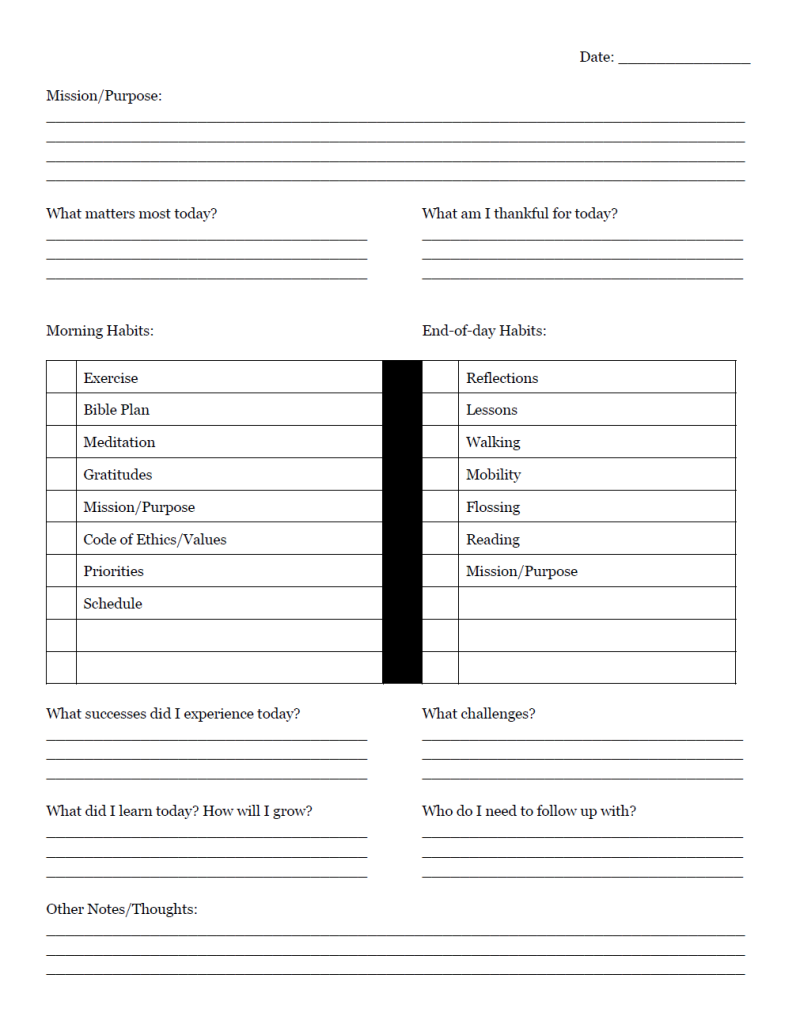“Leadership” is a verb.
It is a mindset, a choice to accept responsibility, empower others, and make a difference.
It is available to any of us, regardless of our age, education level, title, or any other characteristic.
Once we choose leadership, we must live it.
For that, we need a system. I call it the Daily March, adapted from the Jim Collins book Great by Choice.

Imagine you’re standing with your feet in the Pacific Ocean in San Diego, looking inland. You’re about to embark on a 3,000-mile walk, from San Diego to the tip of Maine.
On the first day you march 20 miles, making it out of town. On the second day you march 20 miles. And again on the third day you march 20 miles, heading into the heat of the desert. It’s hot, more than 100 degrees, and you want to rest in the cool of your tent. But you don’t. You get up and you march 20 miles.
You keep the pace, 20 miles a day.
Then the weather cools, and you’re in comfortable conditions with the wind at your back, modulating your effort. You stick with your 20 miles.
Then you reach the Colorado high mountains and get hit by snow, wind, and temperatures below zero — and all you want to do is stay in your tent. But you get up. You get dressed. You march 20 miles.
You keep up the effort — 20 miles, 20 miles, 20 miles — then you cross into the plains, and it’s a glorious springtime, and you can go 40 or 50 miles in a day. But you don’t. You sustain your pace, marching 20 miles.
And eventually, you get to Maine.
Now, imagine another person who starts with you on the same day in San Diego. He gets all excited by the journey and logs 40 miles on the first day.
Exhausted from his first gigantic day, he wakes up to 100-degree temperatures. He decides to hang out until the weather cools, thinking “I’ll make it up when conditions improve.” He maintains this pattern — big days with good conditions, whining and waiting in his tent on bad days — as he moves across the western United States.
Just before the Colorado high mountains, he gets a spate of great weather and he goes all out, logging 40 to 50-mile days to make up lost ground. But then he hits a huge winter storm when utterly exhausted. It nearly kills him and he hunkers down in his tent, waiting for spring.
When spring finally comes, he emerges, weakened, and stumbles off toward Maine. By the time he enters Kansas City, you, with your relentless 20-mile march, have already reached the tip of Maine. You win, by a large margin.
Collins goes on to explain,
“The 20-Mile March is more than a philosophy. It’s about having concrete, clear, intelligent, and rigorously pursued performance mechanisms that keep you on track. The 20-Mile March creates two types of self-imposed discomfort: (1) the discomfort of unwavering commitment to high performance in difficult conditions, and (2) the discomfort of holding back in good conditions.”
This practice is particularly important for leaders.
We set the pace
If we’re inconsistent, our teams will be too. If we seem to never leave the office, our teams will wonder if they should be pulling all-nighters too.
If we can find and demonstrate a sustainable rhythm, our teams will understand that consistent progress towards goals is what we’re seeking.
“Financial markets are out of your control. Customers are out of your control. Earthquakes are out of your control. Global competition is out of your control. Technological change is out of your control. Most everything is ultimately out of your control. But when you 20-Mile March, you have a tangible point of focus that keeps you and your team moving forward, despite confusion, uncertainty, and even chaos.”
Jim Collins
It might also prevent some of the downsides of a workaholic culture: high healthcare costs, decreased brain mass in the prefrontal cortex (not a good thing for decision-making), or disengagement.
We must take care of ourselves
The familiar flight instruction captures it well, “Please secure your oxygen mask before assisting others.” If we’re not taking care of our health and well-being, we’ll eventually be unable to provide an environment where others can be healthy as well.
“It is scarcely news that inadequate nutrition, exercise, sleep, and rest diminish people’s basic energy levels, as well as their ability to manage their emotions and focus their attention. Nonetheless, many executives don’t find ways to practice consistently healthy behaviors, given all the other demands in their lives.”
Tony Schwartz
By including basic health commitments in our Daily March, these habits will remain key elements within our days. Even 10 minutes of meditation and a walking meeting for 20 minutes can have a significant positive impact over time.
We must keep learning
Our world is changing at a pace never before seen. To lead our communities and organizations to a better future, we must make time for learning.
“I was at a dinner party recently with a guy who’s probably one of the top ten finance people in the world. At one point he said, “Do you know what the biggest problem is with big-company CEOs? They don’t read enough.” Isn’t it intriguing that’s number one on his list? We’ve always had to keep up. But now we need to be students in a way that maybe we haven’t been before.”
Tom Peters
30 minutes of an audiobook on a commute or setting aside 15 minutes to read before bed will result in several completed books each month. In particular, this is one area where small daily commitments trump heroic “crams” when urgency strikes. (Looking for something new? Here’s what other CEOs are reading.)
Components
The Daily March consists of two main sections: morning and end-of-day.
Morning
The focus of the morning section is to orient and prepare us to make good choices and decisions.
- What is your Mission/Purpose?
- What matters most today?
- What am I thankful for today?
- Which morning habits set me up for success?
For many of us, the investment of time in health habits, reminding us of our goals, and reviewing our priorities and schedule will return exponential dividends throughout the day. We’ll be calmer, more focused, and better able to balance the urgent needs of the day and our longer-term commitments.
End-of-Day
The focus of the second section is to reflect on our actions and decisions, making note of successes to capture and growth opportunities identified.
- What successes did I experience today?
- What challenges?
- What did I learn today? How will I grow?
- Who do I need to follow up with?
- Which end-of-day habits help me wind down, sleep well, and prepare for the next day?
While much attention is given to morning routines and their link to peak performance, growth comes from struggle and reflection. To continue to develop as a leader, the second half of the march is essential. Without it, you and your organization are likely to stagnate.
Templates

If you’d like to customize your own Daily March, here’s a Google Doc that you can copy and make your own.
If you’d like something simple that you can try out, here’s a pdf you can download and print.
Credit: photo by Mukuko Studio
